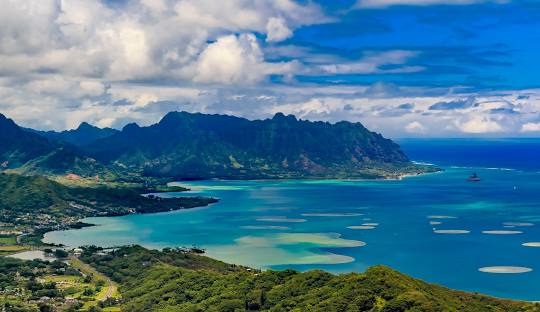
Oʻahu’s Tumultuous Past: From Kingdoms to World War and Beyond
Posted by on
Oʻahu has played a crucial role in Hawaiian history, witnessing conquests, political shifts, and global conflicts. At the time of Captain James Cook’s arrival in the late 18th century, the Hawaiian Islands were divided among warring chiefdoms. In 1783, Kahekili II, king of Maui, conquered Oʻahu and appointed his son, Kalanikūpule, as a puppet ruler. However, in 1795, Kalanikūpule was defeated in the Battle of Nuʻuanu by Kamehameha I, who went on to establish the Kingdom of Hawaii. The Hawaiian Islands were fully unified in 1810 when King Kaumualiʻi surrendered Kauai and Niʻihau.
By the late 18th century, Waikīkī was a thriving settlement and the residence of Kahekili II. However, Honolulu quickly overtook it in size and importance due to its superior harbor, becoming Hawaii’s economic and political hub. In 1845, King Kamehameha III moved the kingdom’s capital to Honolulu, where ʻIolani Palace was later built by King Kalākaua as a modern royal residence. The monarchy, however, met its end in 1893 when a group of American businessmen, supported by U.S. Marines from the USS Boston, overthrew Queen Liliʻuokalani. This coup led to the establishment of the Republic of Hawaii, which was later annexed by the United States.
Oʻahu’s significance extended into World War II, when it became the site of the infamous attack on Pearl Harbor on December 7, 1941. The Imperial Japanese Navy launched a surprise assault, aiming to weaken the U.S. Pacific Fleet and force America into peace negotiations. The attack resulted in the destruction of 12 American warships, 188 aircraft, and the deaths of 2,335 servicemen and 68 civilians, with the USS Arizona alone accounting for 1,177 fatalities. This event led to the United States entering World War II.
Following the war, Oʻahu transformed into a major tourist and shopping destination, attracting over five million visitors annually, primarily from the U.S. mainland and Japan. Today, the island stands as a vibrant blend of historical significance, cultural heritage, and economic development, drawing millions to experience its unique past and breathtaking landscapes.